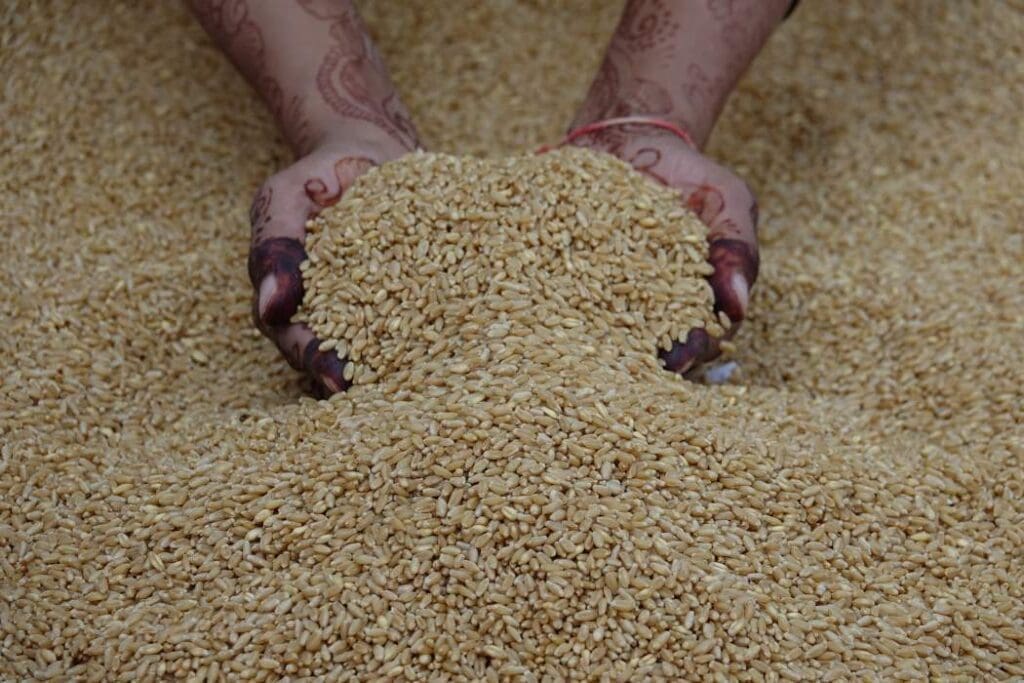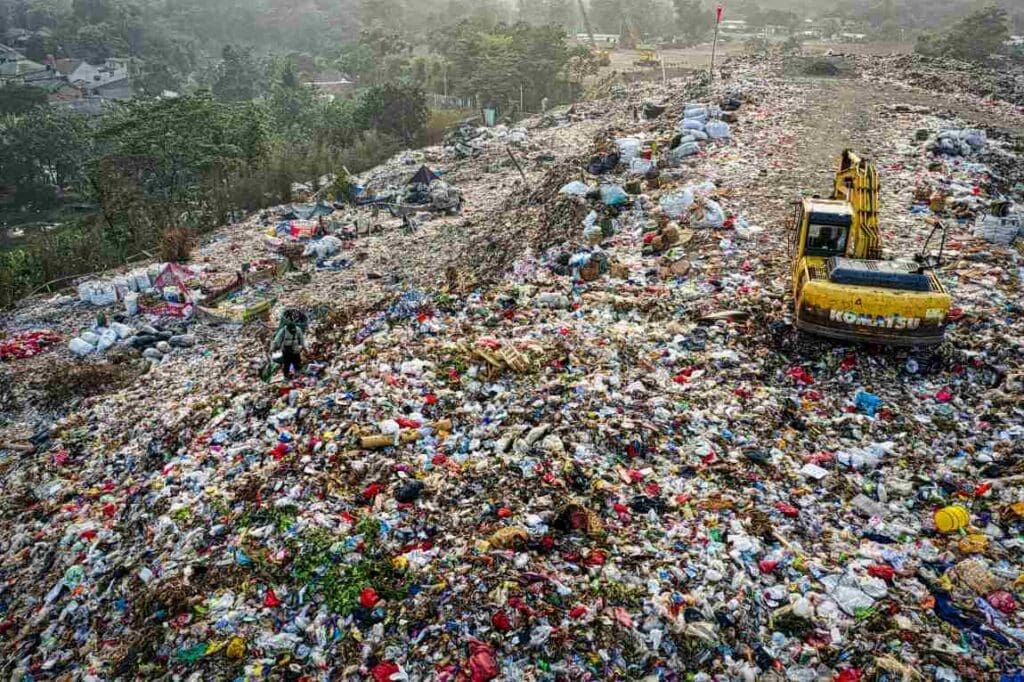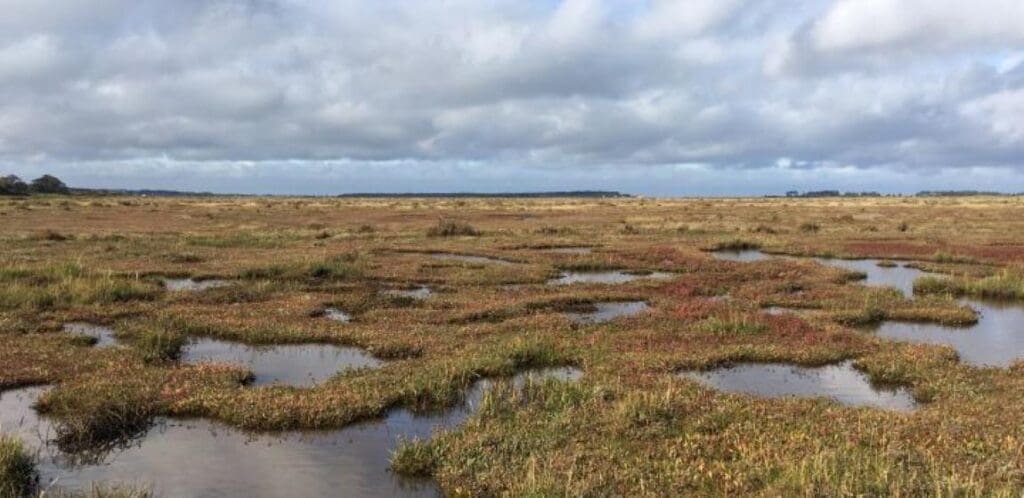Discover the latest articles from leading science journals in the Muser Press weekly roundup, showcasing impactful research published this week.
Coal emissions cost India millions in crop damages
In many parts of India, a single noxious pollutant from coal-fired power stations drags down annual wheat and rice yields by 10% or more, according to a new study by Stanford Doerr School of Sustainability researchers.
The two grains are critical for food security in India, the second most populous country in the world and home to a quarter of all undernourished people globally.
“We wanted to understand the impact of India’s coal electricity emissions on its agriculture because there might be real trade-offs between meeting growing electricity demand with coal generation and maintaining food security,” said Kirat Singh, a PhD student in environment and resources in the Doerr School of Sustainability and lead author of the study published in Proceedings of the National Academy of Sciences.

Clean air and food security
Past studies have sought to quantify overlooked costs of burning coal for electricity by estimating the number of deaths linked to resulting pollution. Government agencies and other organizations use these figures – and estimates of the economic value of statistical life – to understand the costs and benefits of various economic development strategies and environmental regulations.
Until now, however, estimates of crop damages specifically tied to coal-fired power stations – which supply more than 70% of electricity in India – have been lacking despite more than a decade of research showing that air pollutants such as ozone, sulfur dioxide, and nitrogen dioxide hurt crop yields.
“Crop productivity is incredibly important to India’s food security and economic prospects,” said senior study author David Lobell, the Benjamin M. Page Professor in the Doerr School of Sustainability’s Earth System Science Department. “We’ve known that improved air quality could help agriculture, but this study is the first to drill down to a specific sector and measure the potential benefits of reducing emissions.”
Crop damage concentrated in key regions and seasons
For the new study, the authors estimated rice and wheat crop losses linked to emissions of nitrogen dioxide, or NO2, from coal power stations. They used a statistical model that combines daily records of wind direction and electricity generation at 144 power stations in India and satellite-measured nitrogen dioxide levels over cropland.
The authors found coal power plants affected NO2 concentrations above cropland up to 100 kilometers, or roughly 62 miles, away. Eliminating coal emissions from all farmland within this range during key growing seasons (January-February and September-October) could boost the value of rice output across India by approximately $420 million per year and of wheat output by $400 million per year, according to the study.
“This study underscores the importance of looking at environmental issues under a systems lens,” said study co-author Inês Azevedo, a professor of energy science and engineering in the Doerr School of Sustainability. “Any policy focused on reducing emissions from coal power plants in India will be ignoring a crucial part of the problem if it does not consider the damages from air pollution to agriculture.”
In some states with high levels of coal-fired electricity generation, such as Chhattisgarh, coal emissions account for as much as 13-19% of the region’s nitrogen dioxide pollution, depending on the season. Elsewhere, like Uttar Pradesh, coal emissions contribute only about 3-5% of NO2 pollution. Other common sources of the gas, which results from burning fossil fuels, include vehicle exhaust and industry.
Broad benefits from emission cuts
The analysis reveals that the value of lost crop output is almost always lower than the mortality damage caused by any given coal power station. But the intensity of crop damage per gigawatt-hour of electricity generated can often be higher. At 58 of the 144 power stations studied, rice damage per gigawatt-hour exceeded mortality damage. Wheat damage per gigawatt-hour exceeded mortality damage at 35 power stations.
“It’s rare to find a single thing – in this case, reducing coal emissions – that would help agriculture so quickly and so much,” said Lobell, who is also the Gloria and Richard Kushel Director of Stanford’s Center on Food Security and the Environment.
The researchers found little overlap among the stations associated with the largest crop losses and those associated with the highest mortality. This means benefits from possible emission reductions in the future could be more significant and widely distributed than previously understood. According to the authors, the results highlight “the importance of considering crop losses alongside health impacts when regulating coal electricity emissions in India.”
“Well-targeted policies to cut emissions could deliver thousands of dollars of increased crop output for each clean gigawatt-hour, in addition to all the climate and human health benefits,” said Singh.
Journal Reference:
K. Singh,D.B. Lobell,& I.M.L. Azevedo, ‘Quantifying the impact of air pollution from coal-fired electricity generation on crop productivity in India’, Proceedings of the National Academy of Sciences 122 (6) e2421679122 (2025). DOI: 10.1073/pnas.2421679122
Article Source:
Press Release/Material by Josie Garthwaite | Stanford University
Other science articles published this week
Moisture-responsive root-branching pathways identified in diverse maize breeding germplasm
ohannes D. Scharwies et al. (2025) | DOI: https://doi.org/10.1126/science.ads5999 | Science
Elderly vulnerability to temperature-related mortality risks in China
Xin Yao et al. (2025) | DOI: https://doi.org/10.1126/sciadv.ado5499 | Science Advances
Evolution in changing seas: The loss of plasticity under predator invasion and warming oceans
James J. Corbett, Geoffrey C. Trussell (2025) | DOI: https://doi.org/10.1126/sciadv.adr6947 | Science Advances
Historical snow measurements in the central and southern Apennine Mountains: climatology, variability, and trend
Vincenzo Capozzi et al. (2025) | DOI: https://doi.org/10.5194/tc-19-565-2025 | The Cryosphere
Spatio-temporal melt and basal channel evolution on Pine Island Glacier ice shelf from CryoSat-2
Lowery, K. et al. (2025) | DOI: https://doi.org/10.5194/egusphere-2025-267 | EGUsphere
ISMIP6-based Antarctic projections to 2100: simulations with the BISICLES ice sheet model
O’Neill, J. F. et al. (2025) | DOI: https://doi.org/10.5194/tc-19-541-2025 | The Cryosphere
Drift-aware sea ice thickness maps from satellite remote sensing
Ricker, R. et al. (2025) | DOI: https://doi.org/10.5194/egusphere-2025-359 | EGUsphere
Building multi-satellite DEM time series for insight into mélange inside large rifts in Antarctica
Xia, M., Li, R. et al. (2025) | DOI: https://doi.org/10.5194/egusphere-2025-175 | EGUsphere
Formation and fate of freshwater on an ice floe in the Central Arctic
Smith, M. M., Fuchs, N. et al. (2025) | DOI: https://doi.org/10.5194/tc-19-619-2025 | The Cryosphere
Recent centennial drought on the Tibetan Plateau is outstanding within the past 3500 years
Liu, Y., Song, H., An, Z. et al. (2025) | DOI: https://doi.org/10.1038/s41467-025-56687-z | Nature Communications
Determining factors affecting flood risk perception among local communities in Iran
Savari, M., Jafari, A. & Sheheytavi, A. (2025) | DOI: https://doi.org/10.1038/s41598-025-88673-2 | Scientific Reports
Impact of monthly air pollution and weather conditions on cardiorespiratory mortality in Portuguese Metropolitan Areas
Duarte, E.F., Lucio, P.S., Henriques-Rodrigues, L. et al. (2025) | DOI: https://doi.org/10.1038/s41598-025-88473-8 | Scientific Reports
Rising socio-economic costs of PM2.5 pollution and medical service mismatching
Xu, X., Huang, L., Yao, L. et al. (2025) | DOI: https://doi.org/10.1038/s41893-025-01509-9 | Nature Sustainability
Climatological Atlas of Temperature and Salinity for the Northeast Asian Seas
Kim, Y.S., Seok, SH., Lee, JH. et al. (2025) | DOI: https://doi.org/10.1038/s41597-025-04543-6 | Scientific Data
The emergence of a dipole-like mode in Arctic atmospheric circulation conducive to European heat waves
Lee, D.Y., Yeh, SW., Lee, YH. et al. (2025) | DOI: https://doi.org/10.1038/s43247-025-02020-x | Communications Earth & Environment
On the time lag between sea-level rise and basin infilling at tidal inlets
Ranasinghe, R., Wang, Z.B., Bamunawala, J. et al. (2025) | DOI: https://doi.org/10.1038/s41598-025-86699-0 | Scientific Reports
Climate variability, population growth, and globalization impacting food security in Pakistan
Abbas, S., Haider, A., Kousar, S. et al. (2025) | DOI: https://doi.org/10.1038/s41598-025-88916-2 | Scientific Reports
BioVars – A bioclimatic dataset for Europe based on a large regional climate ensemble for periods in 1971–2098
Reichmuth, A., Rakovec, O., Boeing, F. et al. (2025) | DOI: https://doi.org/10.1038/s41597-025-04507-w | Scientific Data
Role of thermal and dynamical subdaily perturbations over the Tibetan Plateau in 30-day extended-range forecast of East Asian precipitation in early summer
He, B., He, X., Liu, Y. et al. (2025) | DOI: https://doi.org/10.1038/s41612-025-00931-2 | npj Climate and Atmospheric Science
Transforming US agriculture for carbon removal with enhanced weathering
Beerling, D.J., Kantzas, E.P., Lomas, M.R. et al. (2025) | DOI: https://doi.org/10.1038/s41586-024-08429-2 | Nature
Simultaneous prediction of 10m and 100m wind speeds using a model inspired by brain emotional learning
Hakimi, A., Ghafarian, P. (2025) | DOI: https://doi.org/10.1038/s41598-025-88295-8 | Scientific Reports
Drivers and mechanisms contributing to excess warming in Europe during recent decades
Dong, B., Sutton, R.T. (2025) | DOI: https://doi.org/10.1038/s41612-025-00930-3 | npj Climate and Atmospheric Science
Observed multi-decadal increase in the surface ocean’s thermal inertia
Lee, C., Song, H., Choi, Y. et al. (2025) | DOI: https://doi.org/10.1038/s41558-025-02245-w | Nature Climate Change
Perceptible climate warming amplifies how education increases climate concern in the US
Bentley, R.A., Horne, B.D. (2025) | DOI: https://doi.org/10.1038/s44168-025-00219-4 | npj Climate Action
Paleoclimate proxy records suggest reduced tropical Pacific zonal asymmetry under sustained global warming
Chung, ES., Kim, SJ., Rodgers, K.B. et al. (2025) | DOI: https://doi.org/10.1038/s43247-025-02039-0 | Communications Earth & Environment
Wildfires mediate carbon transfer from land to lakes across boreal and temperate regions
Bélair, M., McCullough, I.M., Filstrup, C.T. et al. (2025) | DOI: https://doi.org/10.1038/s43247-025-02070-1 | Communications Earth & Environment
Not as random: the stable dynamics controlling shallow convective clouds
Koren, I., Dror, T., Shehter, ER. et al. (2025) | DOI: https://doi.org/10.1038/s41612-025-00924-1 | npj Climate and Atmospheric Science
A holistic stochastic model for precipitation events
Weyant, A., Gershunov, A., Panorska, A.K. et al. (2025) | DOI: https://doi.org/10.1038/s41598-024-77031-3 | Scientific Reports
Disparities in low-carbon concrete GWP at the metropolitan level in the United States
Broyles, J.M., Gevaudan, J.P. (2025) | DOI: https://doi.org/10.1038/s44296-025-00051-1 | npj Materials Sustainability
Analysis of drought and extreme precipitation events in Thailand: trends, climate modeling, and implications for climate change adaptation
de Oliveira-Júnior, J.F., Mendes, D., Porto, H.D. et al. (2025) | DOI: https://doi.org/10.1038/s41598-025-86826-x | Scientific Reports
Weakened future surface warming in China due to national planned afforestation through biophysical feedback
Song, S., Yan, X., Zhang, X. et al. (2025) | DOI: 10.1038/s41612-025-00915-2 | npj Climate and Atmospheric Science
Turbulence enhances wave attenuation of seagrass in combined wave–current flows
D. Vettori, F. Giordana, & C. Manes (2025) | DOI: https://doi.org/10.1073/pnas.2414150122 | PNAS
Temperature-dependent polar lignification of a seed coat suberin layer promoting dormancy in Arabidopsis thaliana
L. Hyvärinen, C. Fuchs et al. (2025) | DOI: https://doi.org/10.1073/pnas.2413627122 | PNAS
Featured image credit: kjpargeter | Freepik




